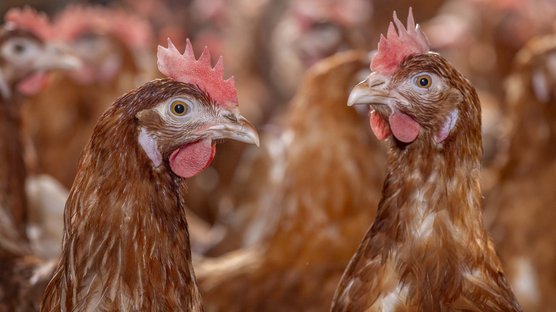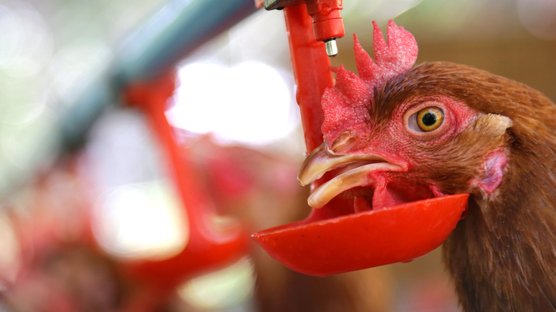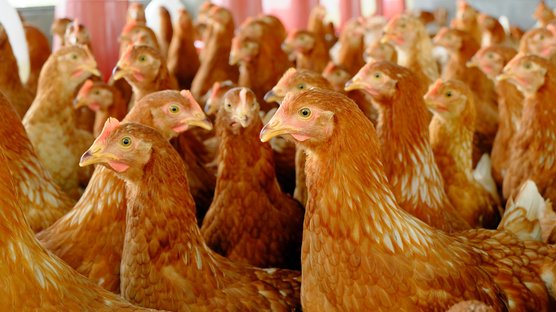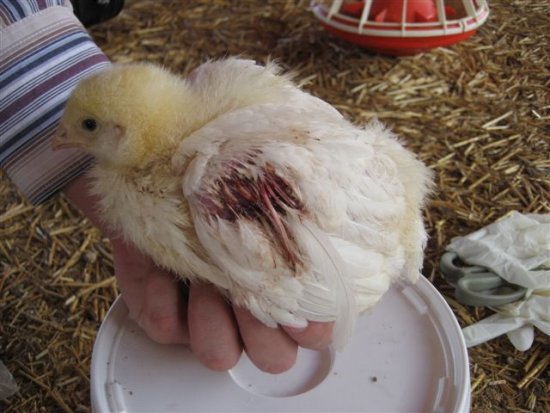
Published on Oct. 15, 2020
Chicken Anemia Virus (CAV) in Laying hens
Chicken anaemia virus (CAV) or chicken infectious anaemia virus (CIAV), formerly known as chicken anaemia agent (CAA), also described as haemorrhagic syndrome, anaemia dermatitis and blue wing disease, is the only member of the genus Gyrovirus of the Anelloviridae. It has a single-stranded circular DNA genome.
CAV is present all over the world and the chicken is the only known host. CAV damages the hematopoietic and lymphopoietic tissues causing generalized lymphoid depletion and anaemia.
The most important route of infection is vertical transmission. Vertical transmission can occur during a period of 3-9 weeks after infection of the parent stock, with a peak of transmission at one to three weeks post infection.
Horizontal transmission is possible through the faecal-oral route, via contaminated litter, by direct or indirect contact. The disease will only occur in young chicks without maternal derived antibody (MDA) protection.
Age resistance develops rapidly during the first week of life and becomes complete by three weeks.
CAV can also be transmitted by semen from infected roosters.
Clinical Signs
Clinical signs are anaemia, depression and increased mortality starting at 10-12 days of age, with a peak at 17-24 days. Decreased blood clotting can lead to the typical blue wings. The flock mortality is normally below 30% and the chicks can recover completely. Secondary bacterial or viral infections can cause more severe clinical signs and higher mortality rates.
The impact of subclinical immunosuppression is often difficult to estimate, but coinfections with infectious bursal disease virus (IBDV), Marek’s disease virus (MDV), reticuloendotheliosis virus (REV) or with REO virus, for sure aggravate virus-induced immunosuppression, making the chicks susceptible for secondary pathogens.
Diagnosis
Clinical signs in combination with age of occurrence and post-mortem findings like thymic atrophy, bone marrow atrophy, haemorrhages in the proventricular mucosa and subcutaneous and muscular haemorrhages are indicative for a CAV infection. The diagnose can be confirmed with PCR and virus isolation. As already mentioned, co-infections can complicate the diagnose of this disease. Elisa can be used for serology.
Control & Vaccination
CAV must be controlled on parent stock level. Parent stock must be infected either by natural infection or by vaccination and must be seropositive before the hatching eggs are used to produce day old chicks. When parent stock must be vaccinated during the production period because it is seronegative, hatching eggs cannot be used during 6 weeks after vaccination. High titres of neutralizing antibody persist in all birds of a flock for at least 52 weeks.
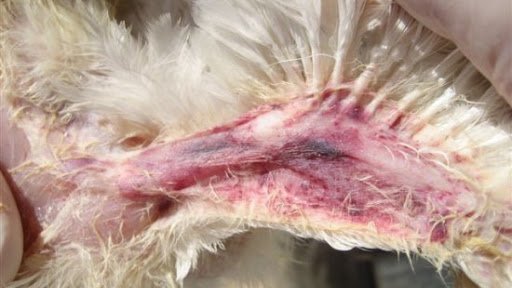
References
- Picture infected chicken: Merck Animal Health
- Picture infected wing: Merck Animal Health
- Diseases of Poultry, 14th edition, Karel A. Schat and Vicky L. van Santen.

